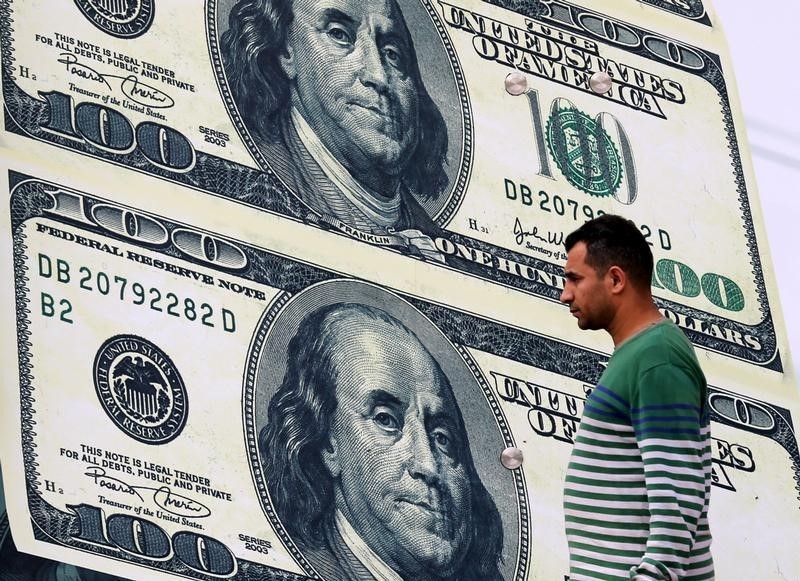Investing.com – The U.S. dollar rose higher on Thursday, bouncing off recent lows ahead of a series of key economic data, while the euro retreated.
At 04:10 ET (09:10 GMT), the Dollar Index, which tracks the greenback against a basket of six other currencies, was trading 0.2% higher at 101.182 after falling to a record low earlier this week 13 months of 100.51.
The dollar is recovering from lows
The dollar has recovered from recent lows, helped by its safe-haven status amid fears of renewed trade tensions between China and the West and increased geopolitical concerns in the Middle East, Libya and Ukraine.
However, the US currency remains under pressure given the prospect of lower US interest rates next month, with the Federal Reserve poised to reverse the aggressive tightening cycle that had supported the greenback for most of the past two years .
The dollar has fallen about 2.9% so far this month, putting it on track for its steepest monthly decline in nine months.
Focus turns to more important economic data later in the session, including weekly data and a revised reading of second-quarter gross domestic product data.
The first reading for the second quarter showed the US economy remained resilient, fueling hopes that the world’s largest economy was heading for a soft landing, but recent data has also shown a weakening labor market.
Price index data – the Fed’s favorite inflation gauge – will be released on Friday and will likely play a role in the outlook for interest rates.
The euro was depressed by the cooling of German inflation
In Europe, it traded 0.4% lower at 1.1079 after preliminary data from German states pointed to a decline in national inflation this month, as well as the broader eurozone figure.
The inflation rate in North Rhine-Westphalia, Germany’s most populous state, fell from 2.3% in July to 1.7% in August, and there were similar declines in the other states.
Germany will publish its national figures later in the session, before the figures are published on Friday. These figures are expected to drop to 2.2% in August, compared to 2.6% in the previous month.
They started cutting rates in June, and a sharp drop in inflation is likely to prompt policymakers to cut again next month.
traded flat at 1.3188, not far from Tuesday’s peak of 1.3269, the strongest level since March 2022.
The yen remains stable after a strong rally
In Asia, yields rose 0.1% to 144.72, stabilizing after a strong rally earlier this week.
The yen has been supported by continued bets that the Bank of Japan will raise rates further this year, following a series of aggressive signals from BOJ officials. But inflation data from the country somewhat eluded the BOJ’s expectations for a steady rise in inflation.
traded 0.3% lower at 7.1060, supported by a series of stronger-than-expected midpoint fixes by the People’s Bank.
But sentiment toward China remained gloomy amid fears of a trade war with the West, especially after Canada joined the U.S. and European Union in imposing high tariffs on China’s electric car sector.


